By Will McCarry
January 10, 2023
A Peruvian forest was vanishing. Coffee and community trust saved it
15 min
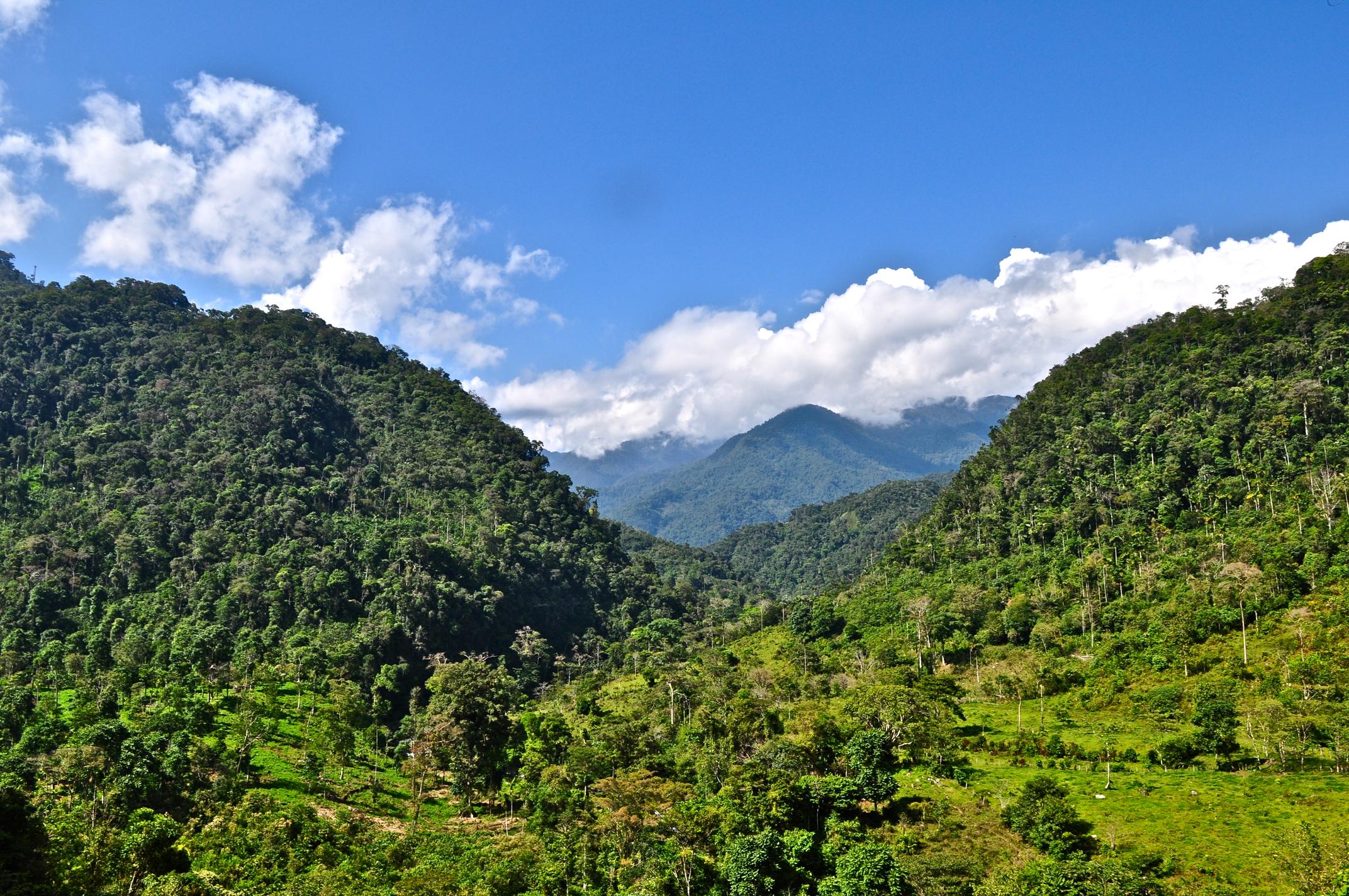
By Will McCarry
January 10, 2023
15 min
Idelso Fernández had no idea that he was setting foot on protected land when he first entered the Alto Mayo Protected Forest.
Fernández and his brother had traveled east from the Andean highlands of Peru in search of better farmland. Following a road carved through a maze of tangled undergrowth, they eventually found themselves in a swath of Amazonian rainforest twice the size of New York City.
There, beneath a canopy of palms and ancient tropical hardwoods, the cloud forest teemed with life. Colorful birds and elusive endangered animals like the rare yellow-tailed woolly monkey flitted and flashed through the overstory. Fernández knew he had found a place to set down roots.
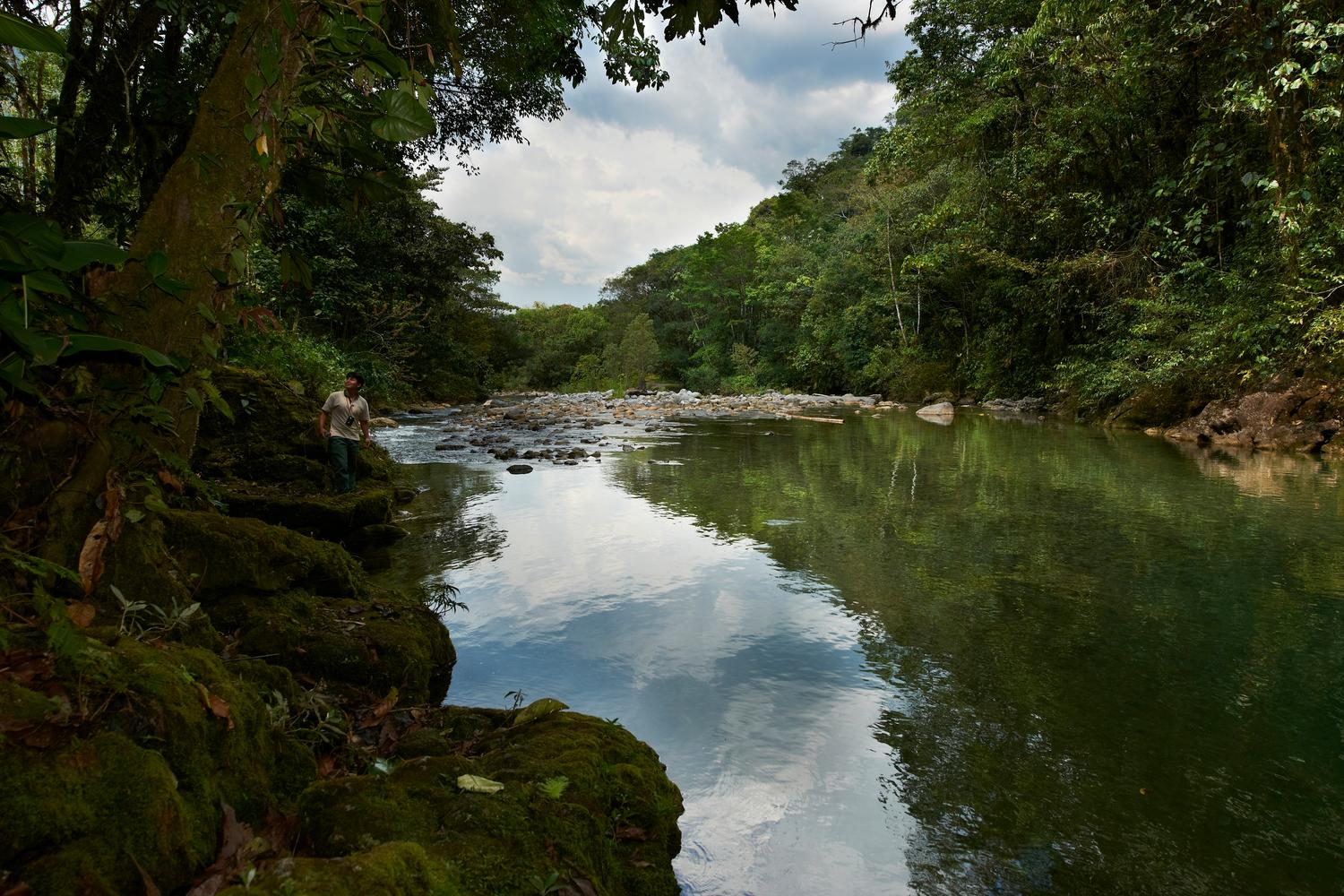
Alto Mayo Protected Forest. © Thomas Muller
He quickly got to work — clearing a small plot of land in the forest. At first, he tried planting rice. When that proved less lucrative than he’d hoped, he turned to coffee — a crop that thrives in the Amazonian highlands, cradled along by crisp nights and temperate days.
“I made money,” Fernández said. “But two years after we entered and planted the first farms, we learned about the protected area. We realized that we didn’t have titles or anything formal since we were in a protected forest.”
For Fernández and others like him, rumors swirled that the government agency responsible for protecting the forest — the National Service of Natural Areas Protected by the State, known by its Spanish acronym SERNANP — sought to remove settlers from their homes.
Since the 1970s, the Alto Mayo Protected Forest has seen a stream of families like Fernández’s move into the forest. Many migrants arrived from densely populated highland areas to the west, where good farming land is often scarce and expensive. With nearly 1,500 families now living within its borders, Alto Mayo is the most populated protected area in Peru — and, perhaps unsurprisingly, one of the most heavily deforested. Stemming this degradation would require giving settlers an active role in the forest’s protection — not only recognizing their place in it but finding sustainable ways to secure their livelihoods within its boundaries.
For decades, inhabitants practiced slash-and-burn agriculture — cutting and burning swaths of trees and underbrush to clear the way for small coffee plantations. This deforestation becomes cyclical when farmers use unsuitable farming practices that cause the soil to rapidly degrade, forcing them to cut down even more trees to clear more land.
“This created a really complicated situation,” explained Ana Luisa Mendoza, an expert in sustainable agriculture at Conservation International. “Even though deforestation rates were going up for years and years, this was still the people’s home. It’s more complex than just telling the settlers that they have to leave. We wanted to find a better way. Everything took shape when we began focusing on the coffee."
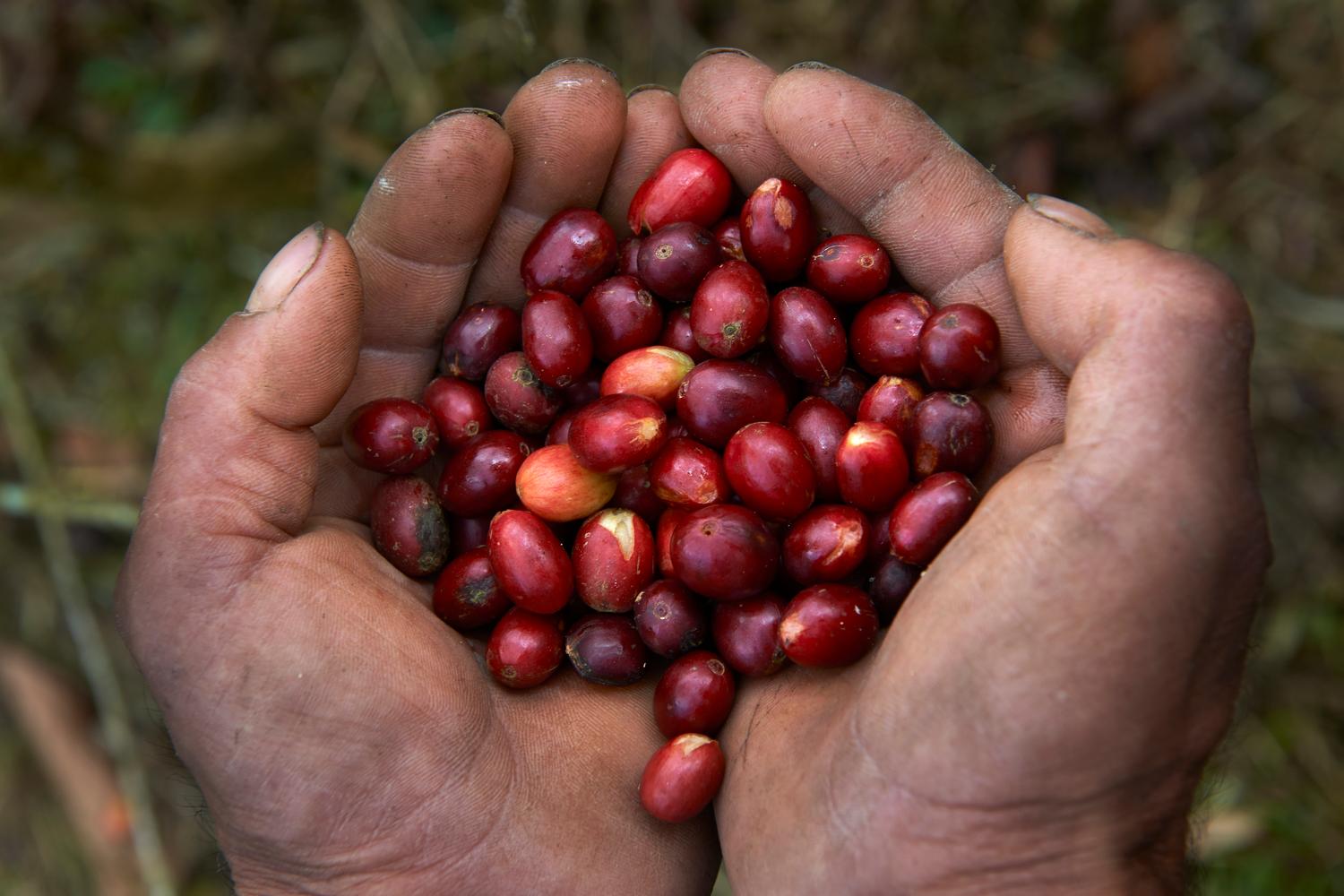
Coffee berries from the Alto Mayo Protected Forest. The Alto Mayo coffee cooperative has exported over 1,500 tons of coffee. ©Thomas Muller
Since 2011, Conservation International has sought to halt deforestation by brokering conservation agreements with local communities who agree to stop clearing forests in exchange for agricultural training, financial skills and access to specialty-grade coffee markets. To date, nearly 1,211 agreements have been signed in Alto Mayo — representing about 80 percent of the families living within the forest’s borders. As of 2020, deforestation in the Alto Mayo Protected Forest had declined by 59 percent.
The conservation agreement model pioneered in Alto Mayo has been so successful that the Peruvian government has implemented similar agreements in 35 other protected areas — and recently incorporated them as a management tool within its system of national protected areas, said Conservation International’s Braulio Andrade, who has managed the Alto Mayo project for the past decade.
“It’s been exciting to see Peru’s national service leaders begin engaging local people all around the country,” Andrade said. “Using the agreements that we developed in Alto Mayo as a template, they are working to build confidence in communities — and that is really the key to all of this.”
The program first took root in the early 2000s, when SERNANP began leading education workshops among local communities about the need to protect the forest. As part of these trainings, residents learned that they were prohibited from cutting down trees or extracting wood. Local communities responded with frustration.
“We thought that they really intended to take our lands,” said Abdías Vásquez, a current conservation agreement subscriber. “We approached SERNANP and told them that we understood that logging was prohibited, but that we needed support or some kind of technical assistance for our farms in return.”
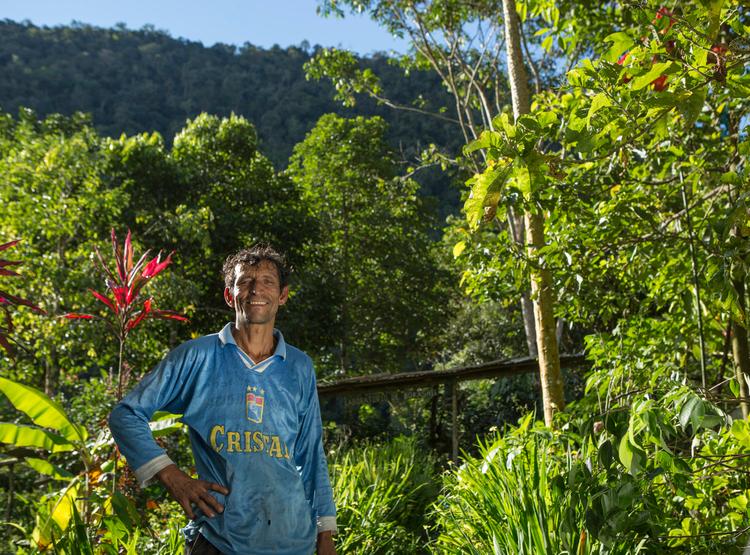
Abdías Vásquez. © Renato Ghilardi/Conservation International Peru
In 2011, Conservation International began a partnership with SERNANP to make this request a reality. Andrade and local officials began approaching farmers to talk about growing coffee and other crops in ways that preserved native trees, soil and ecosystems.
Gricerio Carrasco, a farmer from an area of the forest called Nueva Zelandia, first heard about the program after a particularly disastrous season for his coffee crop.
“Around that time, I had bought another farm and planted it all over again in the wrong way,” Carrasco said. “Of course, it didn't work out for me. A blight attacked the crops, and I lost everything I had invested. In this life as a farmer, it is barely enough to survive, so imagine what happens when you are left in debt by a bad harvest.”
Desperate for advice, Carrasco turned to a park ranger, who suggested he visit the park’s main office, where he could learn about a different way of farming. From there, he spoke with representatives from Conservation International’s local partner, the Asociación Ecosistemas Andinos, a nonprofit focused on conserving Andean ecosystems.
“I will never forget that day because it was the beginning of everything,” Carrasco said.
He felt an immediate connection to the idea behind the agreements. Over the years, he had avoided cutting down trees when possible — and says his farm looked like a forested island surrounded by barren plots managed by his neighbors. After the meeting, he rushed home to share the news with his father.
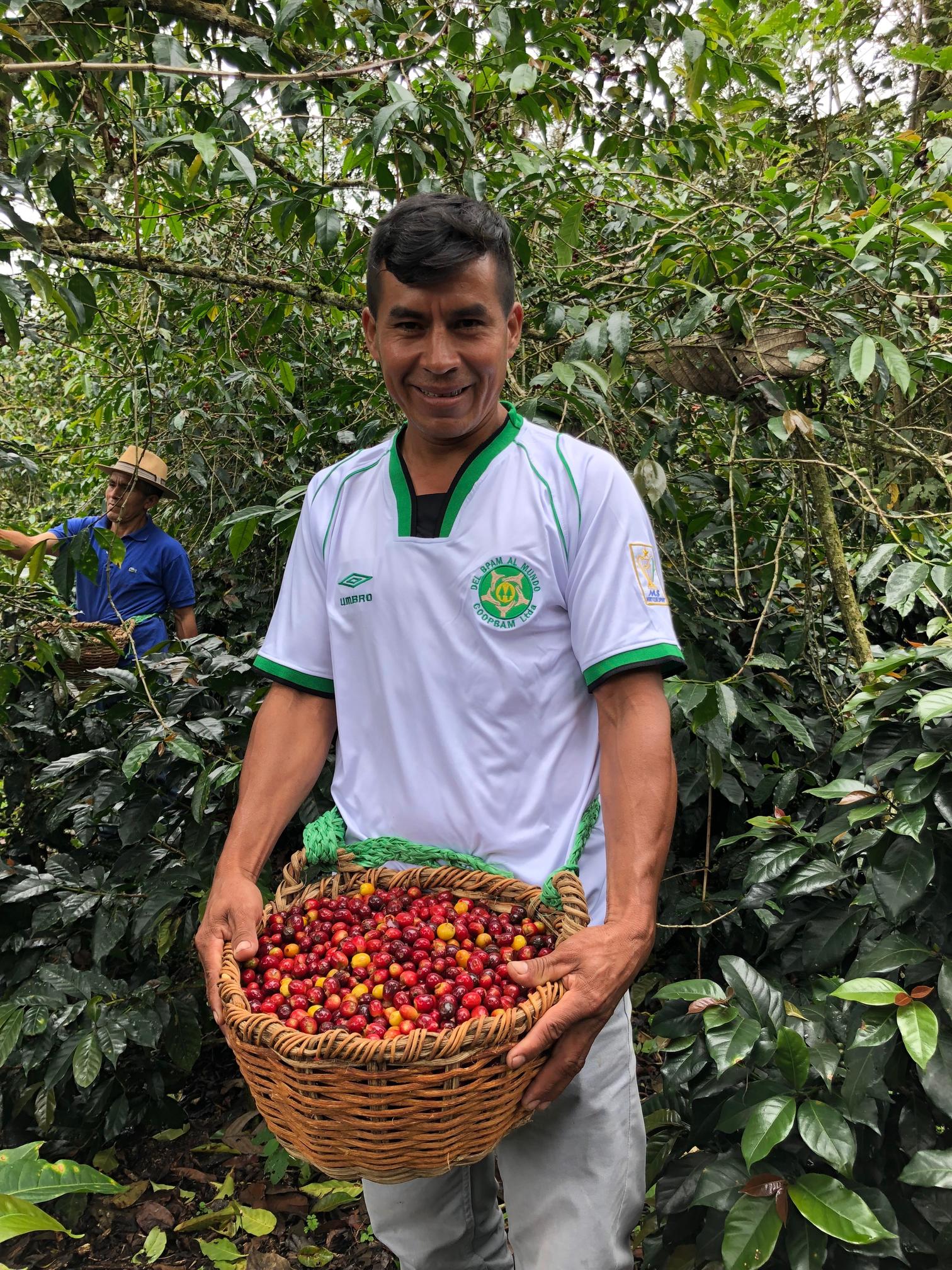
Gricerio Carrasco. ©Daniela Amico
“I told him that this was our opportunity. They are going to train us and give us organic fertilizers,” Carrasco said. “Of course, we had doubts and fears. And there were many people who quickly started talking about us being with SERNANP. But the signing of the agreements came with coffee seeds, and the technicians were in the field with us every day, teaching us new techniques from the ones we’d used before.”
Carrasco, who had seen two straight years of crops destroyed by disease, was elated when the first few buds with coffee berries began to appear. “The plants were well-nourished, and they were no longer affected by rust,” a fungal disease that damages trees and reduces yields, he said. “At the same time, little by little, we were learning how to live in the forest without damaging it.”
Meanwhile, Carrasco had urged his neighbors to participate in the program. Many were still skeptical and refused. This wasn’t the first time that authorities had offered support in return for protecting the forest. While earlier programs had provided farmers with materials such as fertilizers, and occasional classroom lectures, they had not included visits to the participants’ land, which made it difficult to put new techniques into practice.
Eventually, Carrasco managed to persuade 12 farmers to sign the conservation agreements. For this fledgling group, it was immediately clear that this time was different. Trainings and direct assistance helped the farmers begin to adopt new, sustainable methods that were more suitable for the rainforest than the ones many of them had used while living in the highlands. Technicians helped them manage their use of water, manure and fertilizers, as well as plan for disease management, prevent erosion and learn new pruning techniques to keep plants producing yearly.
The goal was not only to yield high-quality, consistent crops, but to keep the soil arable within a single plot of land — so participants didn’t have to cut down more trees.
“It’s called shade-grown coffee for a reason,” said Mendoza, the agriculture expert. “Planting the coffee beneath the shade of the trees improves the quality. So, participants quickly learned that in addition to avoiding cutting down more trees, they could actually reforest their plots with trees that would be useful to them, including native fruit trees. Not only can they sell the fruit to diversify their income but growing it alongside the coffee plants provides a different taste and aroma to the beans.”
As the canopy returns to places that were once deforested, so does the wildlife. And by farming in a way that maintains the plants, trees and fungal networks of this ecosystem, coffee growers are fueling a natural engine for storing climate-warming carbon. In total, the project has helped avoid 8.4 million metric tons of greenhouse gas emissions — the equivalent of taking 150,000 cars off the road each year.
“I feel proud of what I’ve accomplished here,” Carrasco said. “When we first arrived in Alto Mayo, we didn’t know what a protected area was or how to take care of it. With time, the conservation agreements have opened many doors for us. It’s as though we were reborn."
On a rainy morning in December 2014, the conservation agreement subscribers in the protected area met for the first time — 71 families alongside project managers from Conservation International gathered to discuss an idea that had been brewing for months: the creation of a coffee cooperative.
Leading the group was Idelso Fernández. Years had passed since he had unintentionally stepped into the Alto Mayo Protected Forest. Since then, he had signed a conservation agreement and committed to sustainably producing coffee to improve his livelihood. But Fernández still dreamed of finding a way for all the farmers who had settled in the forest to work together.
After signing the conservation agreement, Fernandez had taken a job as an auditor at a company that produced high-quality organic coffee. In that position, Fernández was charged with ensuring that all coffee distributed by the company was harvested and grown following organic and agroforestry principles. It was here that Fernández set his mind on bringing a similar model to the conservation agreement subscribers within the protected forest. He believed that forming a coffee cooperative could take the conservation agreements to the next level — enabling the subscribers to work toward organic and fair-trade certifications that would offer buyers a better-quality bean and fetch a higher price.

Idelso Fernández. © Renato Ghilardi/Conservation International Peru
“Many still saw me as a traitor for working alongside authority figures, but I really wanted to show them that we could make a change to our lives by creating a cooperative that was ours,” Fernández said. “Conservation International had arrived at the same idea. They wanted to use the framework of the conservation agreements to help us get the cooperative off the ground. We spread the idea among all the subscribers that we were stronger united.”
Today, the Alto Mayo coffee cooperative, known by its Spanish acronym COOPBAM, has ballooned to almost 400 members — a mark that opposition is dissipating as people see the results.
Since its founding, the cooperative has enabled members to certify their coffee as fair trade and organic, allowing them to export to specialty markets around the world. In total, they have exported more than 1,500 tons of coffee to the United States, Germany, England, the Netherlands, Australia, Japan, Canada and more.
The certifications and increased profits from these partnerships have enabled the members to invest in projects to improve their livelihoods and their communities. They have built a composting facility to produce organic fertilizer that is distributed to all conservation agreement holders. And they have invested in education, installing satellite antennas so that remote settlements can access live online classes. Recently, they’ve even capitalized on current trends by offering coffee tasting trainings to members to help them compete in the artisanal coffee industry.
Idelso Fernández, still the manager of COOPBAM, has no plans of looking back.
“Five years from now I imagine myself back on my farm, after leading the cooperative with my head held high for having given everything I have,” he said. “The doors are open for anyone who wants to sign a conservation agreement and be a part of creating our own sustainable future by protecting our forests.”
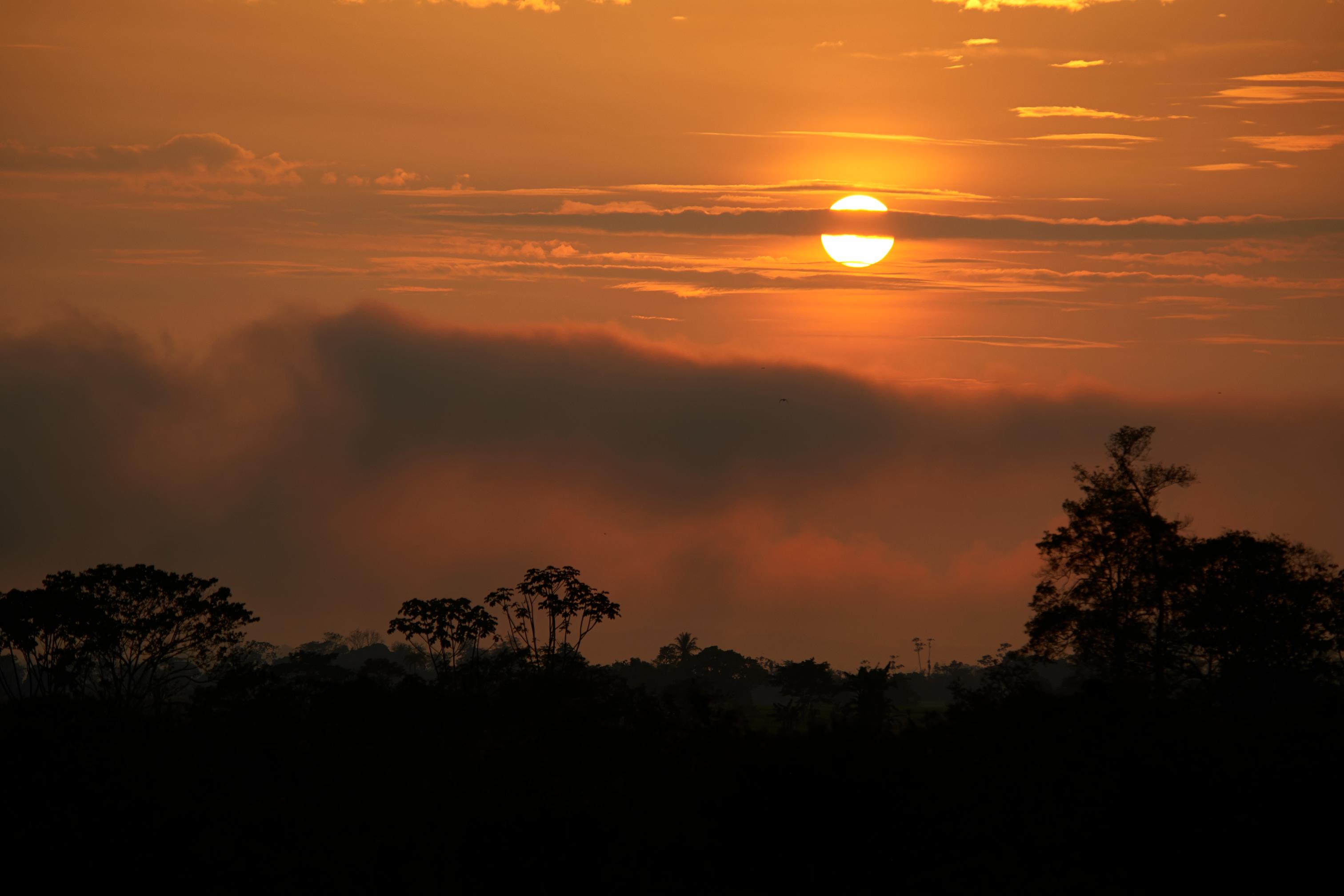
Sunset at the Alto Mayo Protected Forest. © Thomas Muller
Will McCarry is a staff writer at Conservation International. Want to read more stories like this? Sign up for email updates. Also, please consider supporting our critical work.